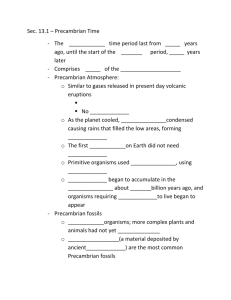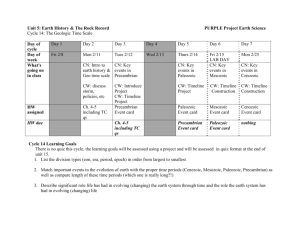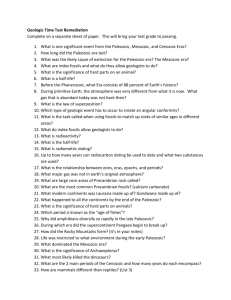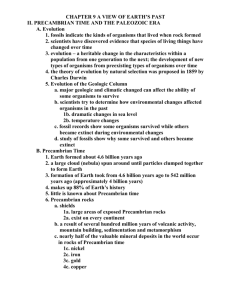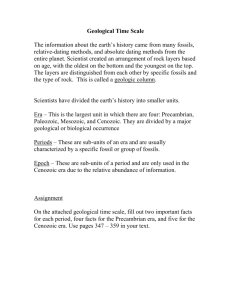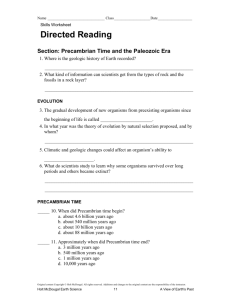Name________________________________________
advertisement
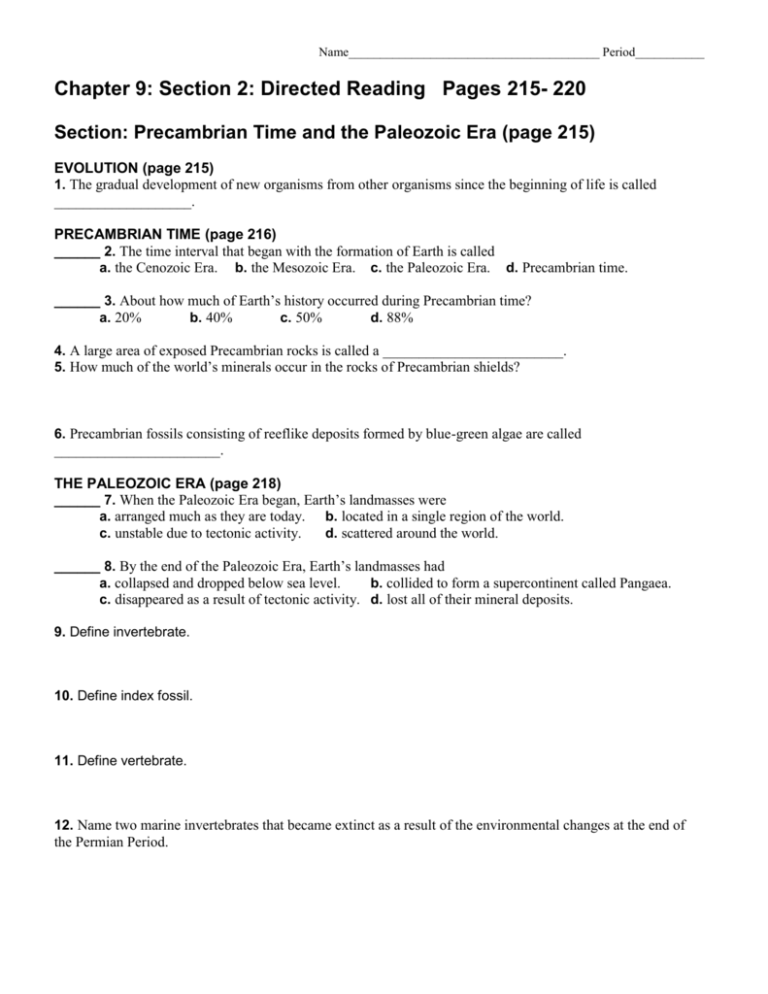
Name________________________________________ Period___________ Chapter 9: Section 2: Directed Reading Pages 215- 220 Section: Precambrian Time and the Paleozoic Era (page 215) EVOLUTION (page 215) 1. The gradual development of new organisms from other organisms since the beginning of life is called ___________________. PRECAMBRIAN TIME (page 216) ______ 2. The time interval that began with the formation of Earth is called a. the Cenozoic Era. b. the Mesozoic Era. c. the Paleozoic Era. d. Precambrian time. ______ 3. About how much of Earth’s history occurred during Precambrian time? a. 20% b. 40% c. 50% d. 88% 4. A large area of exposed Precambrian rocks is called a _________________________. 5. How much of the world’s minerals occur in the rocks of Precambrian shields? 6. Precambrian fossils consisting of reeflike deposits formed by blue-green algae are called _______________________. THE PALEOZOIC ERA (page 218) ______ 7. When the Paleozoic Era began, Earth’s landmasses were a. arranged much as they are today. b. located in a single region of the world. c. unstable due to tectonic activity. d. scattered around the world. ______ 8. By the end of the Paleozoic Era, Earth’s landmasses had a. collapsed and dropped below sea level. b. collided to form a supercontinent called Pangaea. c. disappeared as a result of tectonic activity. d. lost all of their mineral deposits. 9. Define invertebrate. 10. Define index fossil. 11. Define vertebrate. 12. Name two marine invertebrates that became extinct as a result of the environmental changes at the end of the Permian Period. Name ___________________________ Period ______ Chapter 9 Section 2 Review Page 220 1. Summarize how evolution is related to geologic change. 2. Identify two characteristics of most Precambrian rocks. 3. Explain why fossils are rare in Precambrian rocks. 4. Identify one life-form from each of the six periods of the Paleozoic Era. 5. Explain why the Devonian Period is commonly called the Age of Fishes. 6. Describe the kinds of life-forms that became extinct during the mass extinction at the end of the Permian Period. 7. Identify one way in which the formation of Pangaea affected Paleozoic life. 8. Why is Precambrian time ----about 88% of geologic time---- not divided into smaller units based on the fossil record?



